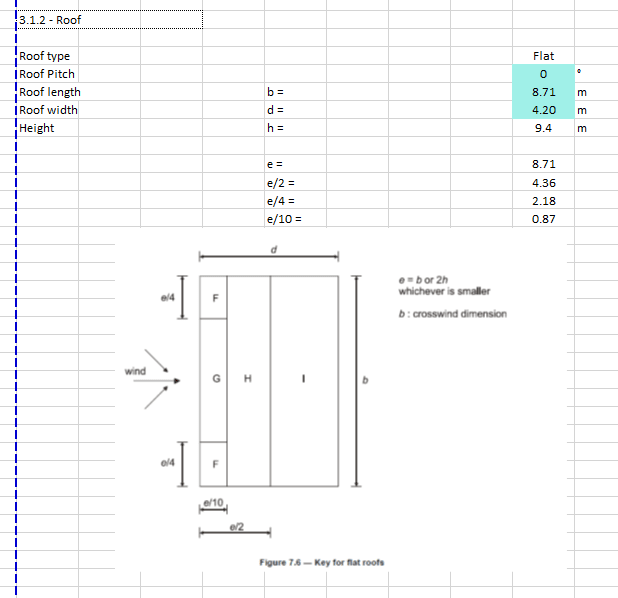Hi Engineers,
I've stumbled across a problem when looking at wind loading on flat roofs. In BS EN 1991-1-4, the roof is divided into areas relative to the relationship between building height and crosswind dimension ('e').
The problem is, when i input my dimensions, i'm ending up with a large area of the roof (area 'I') coming out as a negative value.
The only interpretation i get of this diagram for area 'I', is: I = b x (d-(e/2)), but in this case, b = 8.71, d = 4.2 and e = 8.71, I = -1.35m2
Am I losing the plot here? Or missing something?? How can i end up with a negative area? And if that's actually correct, does that mean the wind should be considered to act in the opposite direction to that of the given pressure coefficient for that area (ie. external suction would actually become external pressure, or internal pressure would actually become internal suction??).
The only other thing i can think of, is to assume that the area I = (d/2) x b... instead of (d - (e/2)) x b, but that doesn't quite feel right, as it's not entirely in terms of 'e'
Any input or advice would be greatly received.
Thanks in advance!

Wiseel
I've stumbled across a problem when looking at wind loading on flat roofs. In BS EN 1991-1-4, the roof is divided into areas relative to the relationship between building height and crosswind dimension ('e').
The problem is, when i input my dimensions, i'm ending up with a large area of the roof (area 'I') coming out as a negative value.
The only interpretation i get of this diagram for area 'I', is: I = b x (d-(e/2)), but in this case, b = 8.71, d = 4.2 and e = 8.71, I = -1.35m2
Am I losing the plot here? Or missing something?? How can i end up with a negative area? And if that's actually correct, does that mean the wind should be considered to act in the opposite direction to that of the given pressure coefficient for that area (ie. external suction would actually become external pressure, or internal pressure would actually become internal suction??).
The only other thing i can think of, is to assume that the area I = (d/2) x b... instead of (d - (e/2)) x b, but that doesn't quite feel right, as it's not entirely in terms of 'e'
Any input or advice would be greatly received.
Thanks in advance!

Wiseel
